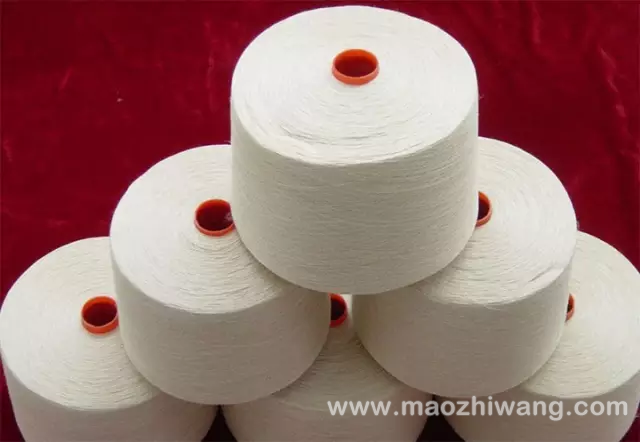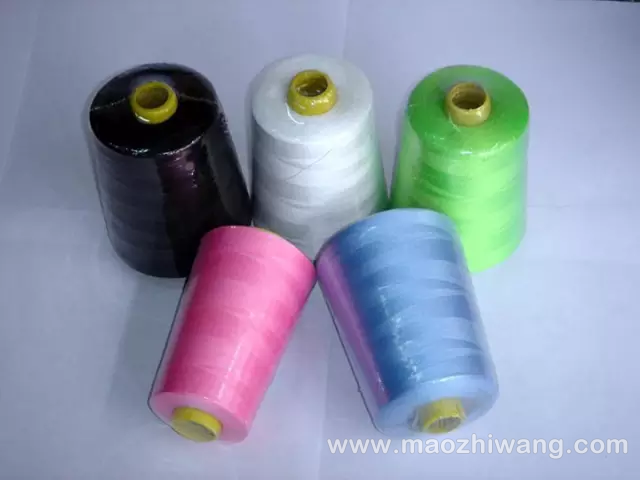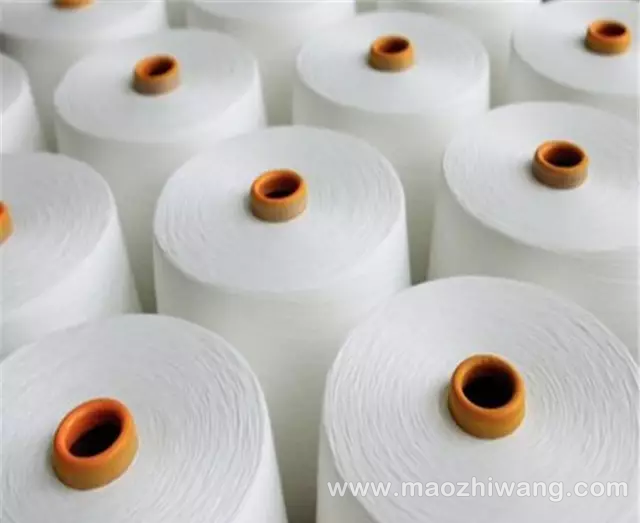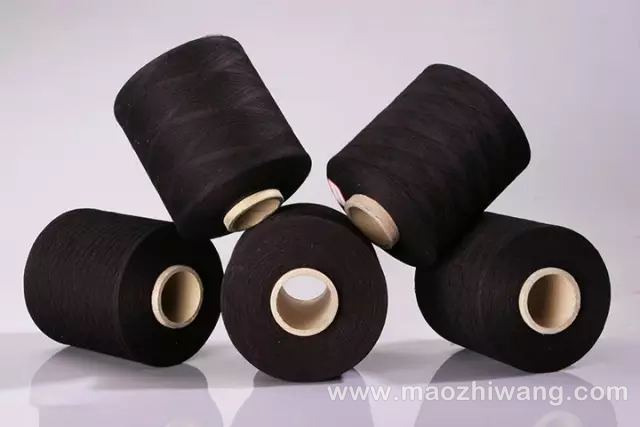Many people say that the right yarn is the right cloth, and the yarn is not good or bad. What does the so-called "suitable" mean? This paper analyzes the relationship between yarn and fabric structure , weaving tightness , printing and dyeing processing , and talks with you about how this “fit†is defined.
Fabric VS yarn quality
Different fabric textures have different requirements for the yarn crepe and the yarn crepe on the cloth surface for the woven yarn . Generally, in pure cotton fabrics, ultrafine fabrics are required to be higher than medium and coarse fabrics; plain weave fabrics are more demanding than twill fabrics; thin fabrics are more demanding than general fabrics.

Plain fabric
The ratio of warp and weft density of plain weave fabric is generally close, the cloth surface is flat, and the fabric structure is 1/1. Therefore , the requirements for the warp and weft yarns are higher, and the unevenness of the weft, coarse and weft yarns is stricter. .
2. Poplin fabric
The fabric of the poplin fabric is dense and low in weft density, and the floating point of the warp yarn is granular, and the fabric structure is 1/1. It has high requirements on warp yarns and strict requirements on weft yarns, bamboo knots and neps.
3. Twill fabric
The twill weave is tightly organized, with high density, low weft density, a good body, a clear twill pattern, and 2/1, 3/1 and 2/2 fabrics. It has high requirements on the strength and the stem of the warp yarn, and strict requirements on the weft and nep of the weft yarn.
4. Satin fabric
(1) Zhigong: The front of Zhigong fabric is mainly formed by warp yarns. There are usually five three-flying yarns and five two-flying yarns. The cloth is thick and the fabric has a tight twill effect. There are some soft and smooth requirements for yarn tribute. The fabric has 5/3, 5/2 warp satin. The main feature of the tribute fabric is that most of the warp yarns appear on the front side of the fabric, and the quality of the warp yarns is relatively high (such as tight warp, quilt, neps, and hundred feet).

(2) Henggong: The front side of Henggong fabric is mainly formed by weft yarn, and the cloth body is soft and smooth like silk. The fabric structure is 5/3 weft satin. The main feature of Henggong fabrics is that most of the weft yarns appear on the front side of the fabric, and the quality of the weft yarns is relatively high (such as neps, wefts, etc.).
5. Extra fine fabric
Extra-fine fabric refers to fabrics with a warp and weft of 10 tex or less (60 inches and above), and most of them are combed cotton yarns, and most of the fabrics are high-grade products. Due to the finer yarns and higher fabric quality requirements, yarns such as rovings, slubs, slivers, neps, oil yarns, yarns and coal ash are extremely demanding.
6. Thin fabric
The thin fabric refers to a fabric in which the warp alignment tightness and the weft arrangement tightness of the fabric are both 50% or less, especially the weft yarn arrangement tightness is 45% or less. Due to the thin density of warp and weft yarns , various defects appear on the cloth surface, especially in the latitudinal direction, such as strips, coarse wefts, bamboo knots, etc., which are more prominent.

7. Yarn-dyed fabric
(1) Meton cloth: Meton cloth is usually a fabric woven into a color yarn and a white yarn (or two different color warp yarns), and also has a warp yarn in both warp and weft directions. Woven with a white yarn (or two warp and weft yarns of different colors). Due to the characteristics of its weaving, the yarn crepe is exposed on the cloth surface, and the requirements for the yarn, hairiness and neps of the yarn used are high;
(2) Youth cloth: The youth cloth is usually woven from a warp yarn and a white yarn in the weft direction, and the warp and weft yarns are also the same thickness. The youth cloth is similar to the rice cloth, and because of the obvious exposure of the yarn defect , the requirements for the neps of the yarn are high.
8. Polyester/cotton polyester interwoven fabric
Cotton polyester /polyester/cotton interwoven fabrics are uniform due to the polyester filaments , and the yarns are strongly contrasted. The yarn defects are exposed , especially when single dyeing, the requirements for cotton yarn twist, neps, strips and hairiness are very good. high.

Weaving tightness VS yarn quality
Differences fabric structure can cause differences in tightness woven fabric, and the different requirements for tightness woven yarn quality will be different.
Fabric tightness calculation formula:
Tightness = warp / warp warp + weft / weft
Judging the difficulty of fabric weaving according to the tightness of the fabric:
| Fabric organization | Tightness | Weaving difficulty |
| 1/1 plain weave | More than 38 | difficult |
| 2/1 twill | More than 42 | difficult |
| 2/2, 3/1 yarn card and double sided | More than 45 | difficult |
| 4/1 satin | More than 47 | difficult |
Difficult fabrics on the machine should use strong yarns, and the density can be used in three-in-one and four-in-one.
Printing and dyeing processing VS yarn quality
Different dyeing processes have different requirements for yarn quality.
Bleaching billet
After the grey cloth is bleached, the cloth surface is clear and white, so the remaining defects on the cloth surface are more likely to appear, especially some oils and colored spots (such as bamboo, oil yarn, oil yarn, color yarn, coal yarn, "three" Special attention must be paid to silk and other fibers. Chemical fiber blended and purely spun products have higher requirements on the above-mentioned defects because of their higher whiteness.
2. Printing blank
Printing blanks are broadly divided into two categories: dyed bottom printing and white bottom printing . Due to the color pattern printed on the surface of the dyeing, the dyeing of the bottom of the fabric can be masked by the general oil stain, color yarn, oil yarn, coal ash yarn, uneven yarn and other woven fabrics on the surface of the fabric; Because the printing surface is relatively white, the requirements for the above yarn defects are strict , and sometimes it is even required to be equivalent to the bleaching blank.
3. Stain blank
The dyed blanks are divided into two categories: light-colored blanks and dark-colored blanks . Light-colored blanks are lighter in color, and have higher requirements for oil stains on the fabric, yarns, oil yarns, coal ash yarns, "three-wire" and foreign fibers; dark slabs are dyed deeper, for color yarns and oils. Yarns, coal ash yarns, uneven yarns, etc. are very masked, but they are more demanding for yarns such as snakeskin, neps and dead cotton.

To sum up, select the appropriate yarn according to different requirements, to meet customer demand for the basic product on, but also does not cause excessive quality. Therefore, the selection of "suitable" yarns is extremely effective in controlling production costs .
Down jackets are usually filled with materials such as feathers and goose down, which provide warmth when worn. Therefore, down jackets are suitable for wearing in cold winters and do not feel cold compared to thin coats. Moreover, there are many styles of down jackets available, suitable for most adult women to wear. Women can choose according to their own needs. According to customer feedback, they feel warm when wearing them.
Ladies Down Jacket ,Red Puffer Jacket Women,Ladies Long Puffer Coat,Ladies Puffer Coat
T&H INTERNATIONAL TRADING LIMITED , https://www.th-tradenet.com